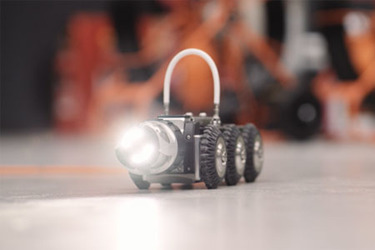Robots Protecting Our Sewers
By Rob Lewis

This is the year when wastewater technology gets smart.
For centuries, engineers have worked on solutions to bring fresh water to cities and then get rid of wastewater safely. From the Roman aqueduct to the Victorian super sewer, water technology has had to keep pace with growing demand since humans first started to live together.
But in recent years our water technology has struggled to keep pace. Today the global wastewater infrastructure is creaking. Overcrowded cities, clogged drains, intensive farming, and heavy downpours unleashed by a changing climate are all putting pressure on the wastewater network under our feet.
According to data from the UN, 80% of the world’s wastewater is dumped — largely untreated — back into the environment, polluting our rivers, lakes, and oceans. Aging sewers are getting blocked with build-ups of non-degradable fats and waste, turning into so-called fatbergs that cause sewage overflows.
New solutions are urgently needed to ensure we keep our waterways safe and prevent wastewater polluting the places where we live.
Smart Solutions
This is the year when wastewater technology gets smart. New digital solutions and innovative engineering solutions are being developed that can predict leaks, patrol pipes, and provide dynamic 24-hour insight into managing water infrastructure.
Robots In Our Sewers

Smart Sensors
As well as robots in our pipes, there are now thousands of sensors being installed in the world’s sewers. This is helping to turn each network into a smart system that can trigger an alert when something goes wrong. Working with UK water companies like Severn Trent, HWM, a Halma company, is deploying thousands of these intelligent sensors to monitor and analyse sewer levels. Accurate sewer data can alert water companies to blockages in the network, meaning engineers can be dispatched to tackle network and treatment plant issues before overspills and pollutions occur.
Digital Twins
As water companies monitor their network more closely, they can also use software to build what is called a ‘digital twin’ to run computer simulations of extreme weather events and the impact on their system based on a wide range of data inputs from across their networks. HWM’s leak detection, pressure, and sewer monitoring sensors are key inputs to such models. This allows the water companies to predict potential events as well as helping them to prioritize decisions about where to invest in their network and infrastructure.
Predictive Maintenance

The Future Is Smart
The demands on our water networks posed by overpopulation and climate change are growing every day. Now, thanks to innovative technology, we are finding new ways to extend the life of existing networks and detect and prevent blockages to protect our environment.
Rob Lewis is Divisional Chief Executive for Environmental & Analysis at Halma.
